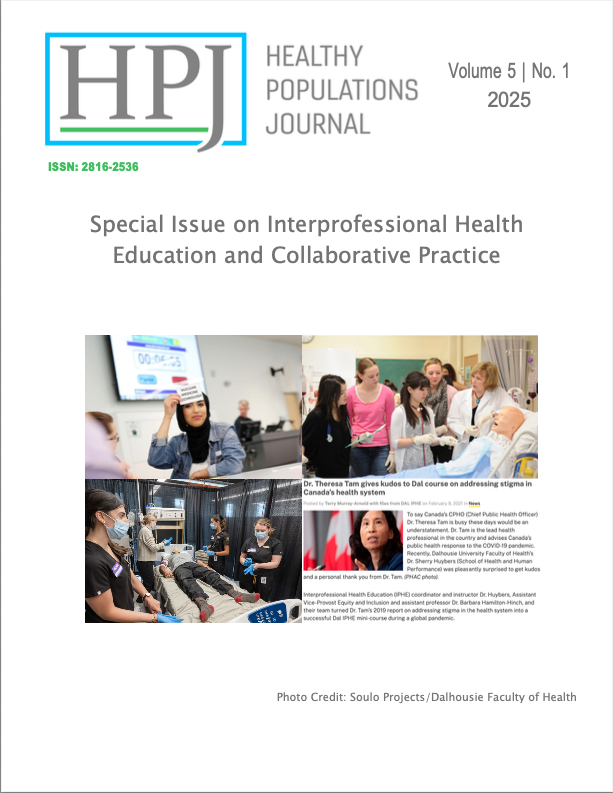Table of Contents
Abstract
Table of Contents
Welcome to the Special Issue
2 From the HPJ Editorial Board
Infographics
3 Use of an Infographic to Understand Barriers to Diabetes Care for People with Lived Experience of Homelessness in Shelters and Increase Diabetes Awareness Among Shelter Staff and Interprofessional Health Teams
Liepert, Tariq, Reed, Auger, Bowdridge, Booth, Camilleri, Nelson, Marfo, Whaley, Bassyouni, Campbell
Commentary
7 Halifax Outreach Prevention Education Support (HOPES) Student-Run Clinic: Bridging Community Health and Interprofessional Health Education
Ayoub, Youssef, Leckey, Khalid, Butt, Blackman
11 Transforming FASD Diagnosis in Newfoundland and Labrador: A Community Collaborative Approach for Capacity Building and Network Development
Dunbar Wilson, Conran Paul, Squires-Walsh
Protocols
15 Exploring Interprofessional Education for Collaborative Practice (IPECP) in Oral Health Education for Professional and Interprofessional Socialization and Identity Development: A Scoping Review Protocol
Van Dam, Price
26 Identifying Factors That Influence How Pediatric Patients or Their Caregivers Decide to Present to an Emergency Department: A Scoping Review Protocol
Devereaux, Boulos, Steenbeek, Marshall, Curran
36 Implementation Strategies for Evidence-Based Interventions in Kidney Transplant Care: A Scoping Review Protocol
McConnell, Cassidy, Steenbeek
Articles
52 You Were Selected for Your Lived Experience: A Love-Centered Evaluation from the Perspective of Teaching Assistants in an IPE Course in Higher Education
Yusuf, Mojbafan, beck
Acknowledgements
64 Acknowledgements
Additional Files
Published
Issue
Section
License
Copyright (c) 2025 Healthy Populations Journal

This work is licensed under a Creative Commons Attribution-NonCommercial 4.0 International License.
The journal aims to reduce barriers to publishing and sharing research and inequalities to accessing information.This journal provides immediate open access to its content on the principle that making research freely available to the public supports a greater global exchange of knowledge. The open-access nature of the journal means that there will be no charge for authors or readers to use the journal. The journal has a Creative Commons Attribution Non-Commercial (CCBYNC) attribution which allows the author (and others) to share and distribute their full-text article in other public domains, such as Google Scholar or Research Gate.

